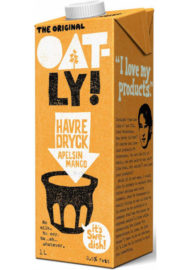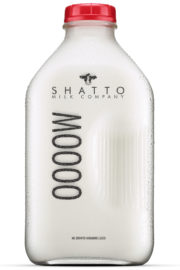Healthy believers: 4 types of health conscious consumers
Business development • Healthy believers – consumers with a strong belief in the importance of healthy food and drink – are for many food producers a growing and profitable customer segment. But watch out! Healthy believers are not a homogeneous group. There are four different types. Let’s explore them in-depth.
What makes consumers choose one food over another? For more and more people, it is health. The own health or the health of close relatives. This is a clear trend that has lasted for a few years, and will surely continue for many years to come. As a customer segment, they are very interesting for food producers. Most people in the segment are strong buyers and are prepared to pay a premium price to get food that they regard as healthy. Many of them are driven by a strong conviction. So strong that the Healthy Marketing Team (HMT), in its Global Gamechangers 2020 report, call them healthy believers.
But healthy believers don’t believe the same thing. HMT distinguishes four types of healthy believers with totally different notions of what is healthy food and drink.
In two articles, we explore four different types of healthy believers and look at how food companies can use storytelling to market and sell to them. In this article, we take a closer look at the four types of healthy believers.
Segmentation
In marketing, it is common for potential buyers to be divided into different segments. Each segment is characterized by properties that are common to everyone in the segment. The point is to adapt the marketing to a segment according to the distinctive characteristics. This happens in virtually all industries and for all types of products and brands. The food industry is no exception.
If you walk into a grocery store and let your eyes wander over the shelf with breakfast cereals, you are greeted by signals, in the form of the packaging’s appearance and content, which are made to attract specific segments. Most notable is the difference between the colourful packages of sugary cereal flakes for children and the sober packages of supermüsli for health-conscious adults.
The health-conscious adults are a segment for which more and more food producers have opened their eyes. So have the consultancy bureau The Healthy Marketing Team (HMT), which specializes in marketing and brand building in the crossroad between food and health.
Healthy believers
In the 2020 edition of its annual report, Global Gamechangers, HMT takes a closer look at the consumer segment that values healthy food and drink. They call these consumers healthy believers.
But healthy believers are not a homogeneous group. They are united by a belief in the importance of healthy food. But they differ significantly in what they consider to be healthy. In any case, it is not determined by the nutrition declaration, the nutritional chart or what the doctor is saying.
Subsegmentation
Healthy believers’ perception of healthy food is shaped by deeper motives. Culture, values, politics and identity formation plays a crucial role in their consumption.
Therefore, the healthy believer segment must be divided into even smaller segments.
HMT, together with a team from Lund University, studied healthy believers and concluded that they can be divided into four sub-segments with diametrically different perceptions of what is healthy food and drink.
The four sub-segments consist of self-realization consumers, ethical consumers, scientific consumers and traditional consumers. Let’s take a closer look at them.

Self-realization consumers
We start with the self-realization consumers.
Individualism and emotions are key concepts in this segment. It doesn’t matter if they hear things that don’t fit with their worldview. The views and thoughts of others are not important as long as it feels right to them. What they know about the world comes from their emotions. The boundary between knowing and feeling is not clear.
They are constantly looking for the latest, coolest and most different trend. They put great value in ‘discovering’ these things and being in some form of cutting edge. At the same time, they value the phenomenon, ingredients, rituals and habits that they regard as ancient. For example, yoga or meditation. These rituals and habits are viewed as timeless knowledge and wisdom surrounded by mysticism, which is perceived as positive and something that the ‘emotional knowledge’ can rest in.
Important questions for the self-realizing consumer
- Does the product fit my style?
- Does the product feel like a reward?
- Does the product meet my specific needs?
Example: Moon Juice

Picture: Moon Juice
Moon Juice is an American company that has gone from selling healthy juices to expanding their assortment. They now offer a variety of products and are at the intersection of health, beauty and spirituality. Exactly the cross-border and holistic approach that the self-realizing segment appreciates.
Ethical consumers
Next segments are the ethical consumers. Here we find consumers who care deeply about global issues such as climate change and injustice. Health goes beyond healthy foods that are good for the body. Health is also sustainability, good working conditions and animal care. The food we choose is crucial to the well-being of the planet.
The ethical consumer is a political consumer who doesn’t want to spend money on something that can be perceived as dirty or questionable. Brands that, on the other hand, send out clear signals about sustainability and responsibility can be praised to the skies by their fans.
For the ethical consumer, there are clear dualities; there is black and white – good and bad – justice and injustice.
Important questions for the ethical consumer
- Does the product take a stand?
- Does the product make a difference?
- Does the product express my political opinion?
Example: Oatly

Picture: Oatly
Oat milk producer Oatly is a good example with its offensive communication aimed at traditional cow milk. They have been looking to create a debate to show who they are and what they stand for. Oatly has also been good at appearing in the right context where there are many young and conscious people, such as the collaboration with the recurring music festival Way out west, in Gothenburg.
Scientific consumers
Here we find the opposite of the self-realizing consumers. Rationality and empirical data is the way to go. There is no magic; what counts is the tangible and concrete fact. Health is concrete results coming from exercising, weight loss, or the performance of a product. It may be reduced waist measurements in centimetres, running faster in the next marathon, or buying an advanced heart rate monitor. Health and well-being are measurable things. Therefore, they are also interested in being at the forefront and want to know all about the latest technology, to get access to the most advanced pedometer, or the latest dietary supplement.
The hunt for the best product goes by reading and keeping up to date. Therefore, it is pointless trying to trick the scientific consumer. By listening to experts and knowledgeable professionals in the industry, they try to acquire a broad knowledge base. Everything to make the best purchase decision possible.
The scientific consumer also wants to evaluate products purely practical, it is, however, measurable results rather than the experience of the product that is the focus.
Important questions for the scientific consumer
- Is the product the best of its kind?
- Is the product on a scientific basis?
- Does the product improve my performance?
Example: Maurten

Picture: Maurten
Maurten is a Swedish company focused on making the best and most sophisticated sports drink. The product is intended to make the consumer perform as well as possible during endurance-demanding sports. Maurten has a close collaboration with academics and universities. Technology, science and research are recurring key terms in their communication.
Traditional consumers
Finally, we have the traditional consumers. They search for and appreciate the genuine, original and unspoiled. They have distrust and contempt for the large-scale, global and mass-produced. There is also a form of duality here – the real and the false.
The traditional consumer values the experience more than anything else. The experience of tradition and that there is a clear cultural heritage and something to hold on to. Only then does a sense of security arise.
Important questions for the traditional consumer
- Does the product have a story?
- Is the product part of a tradition?
- Is the product easy to bond with?
Example: Shatto Milk

Picture: Shatto Milk Company
Shatto Milk is a small dairy farm with a rich heritage that goes far back. The current owners are good at taking advantage of this heritage by telling us how it all began in the late 1800s, and how milk is still considered a product where local and family values are fundamentals. The traditional consumer appreciates this intimacy, which in turn creates trust in the brand.
The common factor
The four segments of healthy believers emphasize different things and may appear quite different. For example, scientific consumers are searching for numbers, data and evidence, while ethical consumers may be more interested in working conditions in factories, carbon footprint, or products free from animal testing.
But there is one common factor that all companies that target one of these segments must relate to: Credibility.
Earn credibility
Credibility is hard to win and easy to lose. Many common ways of marketing are, at best, ineffective and at worst harmful. For example, it is difficult to gain credibility with regular advertisements, and overly generous advertising can instead erode the credibility.
But there are effective ways to gain credibility in the eyes of the consumer with marketing. One such way is called storytelling. We will take a closer look at this in the next article.
Please, share this article if you liked it.
[et_social_share]




